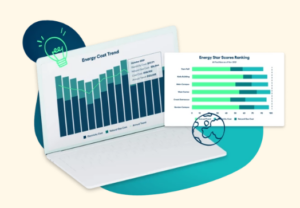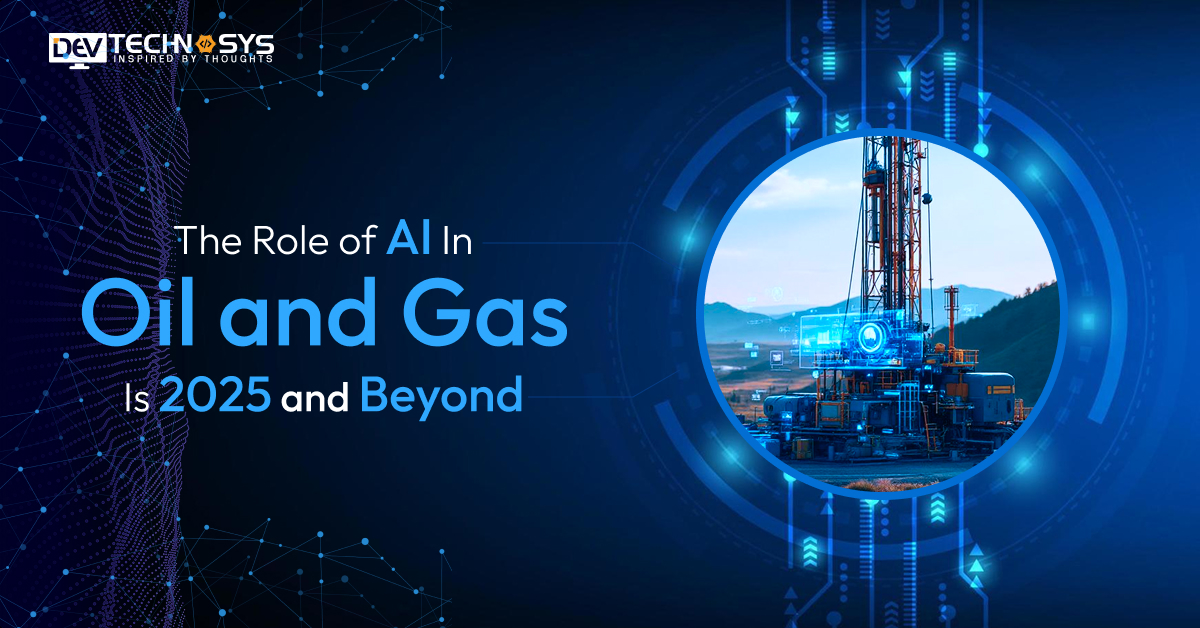“Energy Management Software is the Key to Unlocking Our Sustainable Future.”
Elon Musk
In a world in which energy conservation and sustainability are paramount, it is essential to have cutting-edge solutions. We welcome you to the epicenter for innovation, where we will explore the endless potential of energy management software development.
This comprehensive guide reveals the secrets of creating intelligent, dynamic, and eco-conscious systems that redefine our approach to monitoring, optimizing, and harnessing energy. We explore the key features of energy management software development, from real-time analysis that provides unprecedented insights to automated control that optimizes energy consumption.
Join us in unlocking the door to an even brighter and greener future. A future where energy management software development becomes the beacon for efficiency, leading us to a sustainable future for future generations. Prepare to revolutionize how we interact with energy. The power to change our world is at your fingertips.
What is Energy Management Software (EMS)?

A computerized system for monitoring, controlling, and optimizing energy consumption is Energy Management Software. It can be done in various settings, such as commercial buildings, industrial plants, or residential homes.
EMS provides real-time data analysis to help users identify inefficiencies and make informed decisions about energy consumption.
Energy management software development often has automation features to schedule equipment operations, manage load during peak demand and integrate with building systems such as HVAC and lighting.
It creates reports, alerts, and recommendations for improving energy efficiency and tracking utility bills. Energy management software development is vital for achieving sustainability, minimizing carbon footprint, and increasing environmental responsibility.
15 Features of Energy Management Software

Businesses, industries, and organizations use energy management software development to monitor, analyze, optimize, and control their consumption. It allows users to identify areas of inefficiency in energy and implement strategies that reduce energy consumption and costs. Here are 15 features that make energy management software development essential:
1. Real-time Monitoring:
Software for energy management allows real-time monitoring and analysis of consumption across utilities such as electricity, gas, and water. Users can instantly identify abnormalities and waste by viewing current usage patterns.
2. Data Visualization:
Visualization tools that are effective present energy data as graphs, charts, and dashboards. It makes it easier to see trends, patterns, and anomalies.
3. Historical Data Analysis:
The energy management system software should be able to store historical data on energy consumption so that users can analyze consumption patterns over different periods and make informed decisions based on previous performance.
4. Benchmarking:
Comparing energy consumption across multiple sites or industry standards can help businesses set realistic energy savings targets and compare their performance with peers.
5. Energy Alerts and Alarms:
The user can create customizable alerts and alarms that will notify them when their energy consumption exceeds certain thresholds or when there are irregularities. It allows for quick action.
6. Energy Reporting:
Customized and comprehensive energy reports allow users to track key performance indicators, measure the effectiveness of energy-saving measures, and communicate progress with stakeholders.
7. Load Profiling:
The load profiling feature allows users to identify peak demand periods and strategize to reduce demand charges or optimize energy usage.
8. Energy Cost Allocation:
Energy management software development is a great way to accurately allocate costs for multi-tenant or departmental organizational buildings. It promotes transparency and fair billing.
9. Utility Bill Management:
Energy management software development can automate data entry, validation, and reconciliation of utility bills. It minimizes errors and saves time on manual data processing.
10. Forecasting and Predictive Analysis:
The best energy management software which uses historical data to forecast energy consumption, allows businesses to optimize their energy use and plan more effectively.
11. Monitoring and Control of Equipment:
Integrating smart devices with energy-intensive equipment allows users to remotely monitor and control them, optimizing the operation of their energy-efficient equipment.
12. Energy Efficiency Recommendations:
Advanced energy management software users can receive actionable advice based on consumption patterns and best industry practices.
13. Carbon Emissions Tracking:
On-demand energy management software development helps organizations to measure their carbon footprint by calculating and tracking carbon emissions associated with their energy usage.
14. Energy Procurement Support:
Energy management software development is a great tool for businesses with complex energy procurement strategies. It can help optimize contracts and manage energy purchases effectively.
15. Integrating and Compatibility:
To ensure seamless data interoperability, energy management software must be compatible with various devices such as energy meters, Building Management Systems, Internet of Things devices, and other relevant systems.
Why Energy Management Software Development?

Free energy management software provides a double advantage when it comes to saving resources. High levels of energy conservation are achieved. It also increases the efficiency of many industries that save energy. It’s not all! There are more benefits to be gained from energy management software development. Let’s know more.
1. Spending on Energy Depletion:
Energy management software development can improve energy efficiency. The software allows for real-time monitoring and installation of smart meters. Data can be extracted to help make informed decisions and reduce energy waste.
2. Reduce Carbon Emissions:
Carbon emissions are a major challenge for this generation. Carbon emissions and resource demand both contribute to the increase of greenhouse gases. It’s time for action. The energy management software development market is growing, and companies are combining them to reduce carbon emissions.
3. Automating the Process:
Automation is another benefit of energy management software. The IoT can automate the process, which will also reduce labor costs.
4. Identification and Prevention of Malfunctions:
IoT allows for the creation of a predictive algorithm that helps identify potential issues and resolve them in advance. It can save money and time by preventing real damage and taking preventive measures.
5. Prediction of Consumption:
In combination with machine learning algorithms and IoT data, IoT energy risk management software can predict future energy consumption.
How to Develop Energy Management Software?

Developing Energy Management Software requires planning, programming, and a thorough understanding of energy management. This step-by-step tutorial will help you get started.
1. Identify the Requirements:
Start by defining what features and functionalities your energy management software development must have. Think about the type of data that needs to be managed, user interface requirements, and reporting capabilities. Also, you can consider any integrations.
2. Research and Gathering Data:
Understanding the energy management software market and its potential users. Gather information on the best practices, standards, and existing EMS solutions. You will be able to make more informed decisions about the design process of energy management software development.
3. Choose a Technology Stack:
Choose the right programming languages, frameworks, and databases for your energy management software development. For web-based EMS apps, popular choices include Python (Django, Flask, React or Angular), JavaScript, Node.js (Node.js), React or Angular, and databases such as PostgreSQL, MongoDB, or React.
4. Create the Database:
Create a database schema to store and manage energy-related data, including consumption records, information about equipment, and user accounts. Consider data privacy and security for successful home energy management software.
5. Create a Data Collection Mechanism:
Implement a way to collect energy data from smart meters or sensors. It could be possible to use APIs from energy monitoring devices or communication protocols such as Modbus.
6. Real-Time Data Processing:
Implement a system that can process and visualize the energy data in real time if you need to monitor it. Use charts, graphs, and dashboards to make the information more user-friendly.
7. User Authentication & Authorization:
Ensure to Implement secure user authentication and authorization mechanisms to protect sensitive data and control access to energy management software development.
8. Energy Analytics and Reports:
Create analytical tools to analyze historical energy data and identify patterns, trends, and areas of optimization. Users can create customizable reports to track their energy consumption and make informed choices.
9. Testing:
Test the energy management software development thoroughly to find and fix bugs. Unit testing, integration testing, and user acceptance tests are all necessary to ensure the system performs as expected.
10. User Interface:
Create an intuitive and user-friendly interface to allow users to interact easily with the software. Keep in mind the user’s experience during the industrial energy modeling software development phase.
11. Documentation:
Create comprehensive documentation, including user guides, installation instructions, and API documentation in your energy pro software.
12. Deployment & Maintenance:
Install the energy management software development on your servers or in the cloud. Also, to ensure the software runs smoothly and securely, you can set up regular maintenance and updates.
13. Compliance and Security:
Ensure that your best energy audit software development complies with the relevant regulations of the energy industry and adheres to best practices in data security and privacy.
How Much Does It Cost To Build Energy Management Software?

Costs of custom energy management software development can vary greatly depending on many factors. These include the complexity of software, features, and functionality required, location and expertise of the development team, and timeline. Here are the major cost components that you should consider:
1. Development Team:
Most costs are spent on hiring software designers, custom software development company, and project managers. Rates can vary depending on the region or country. Hire dedicated developers from North America or Europe, for example, might be more costly than hiring one from elsewhere.
2. Functionality and Features:
The higher the cost of development, the more features and functionality you require in your software for energy management. The cost will be higher if, for example, you require real-time data analytics, integration with different hardware systems, advanced reporting, and predictive analytics.
3. Design and User Experience:
Energy management software must have a well-designed interface and a great user experience. Investing in a good UX/UI design could increase the cost of your software.
4. Integrating and Compatibility:
The development cost may be higher if the software integrates with existing energy-management systems, devices, or databases.
5. Data Security and Compliance:
Security measures may be required to ensure data security. Energy management software deals with sensitive information, so you must invest in additional security measures.
6. Testing and Quality Assurance:
It’s important to conduct rigorous testing and quality assurance to ensure that the software is reliable and efficient. It results in increasing the cost to build energy management software.
7. Maintenance and Support:
It is necessary to provide ongoing support and maintenance after the initial development. It will include bug fixes, updates, and ensuring the software remains compatible and up-to-date with the latest technologies.
8. Hosting Infrastructure:
The costs of maintaining infrastructure and hosting software on servers should be considered. It isn’t easy to give an exact price without knowing what you want to do with the software. The cost to develop energy software can vary from tens to hundreds of thousand dollars, depending on its complexity and scale.
Some companies also offer energy management software on a subscription-based basis. This option can be more cost-effective for smaller businesses or organizations with less specific requirements. These solutions are often customizable and offer a wide range of features. Costs for these solutions vary depending on the vendor and the degree of customization needed.
To get an accurate estimate, it’s important to thoroughly analyze your project requirements, research the market, and obtain quotes from the best energy management software development company. Consider the potential long-term savings and benefits that energy management software could bring to your company.
In A Nutshell!
Our ultimate guide will help you discover the power of software development for energy management. This comprehensive resource includes key functionalities, integration options, and cost considerations. It covers everything from optimizing renewable energies to enhancing grid efficiencies.
Smart grids can unlock the potential for real-time data analysis and seamless user experience. Make informed decisions to ensure the success of your business. Empower your company with the latest technology such as renewable energy software solutions to embrace a more sustainable, efficient future.
Frequently Asked Questions
Q1. What is Energy Management Software (EMS)?
Software for energy management is a digital instrument that allows you to monitor, analyze and optimize energy use in various systems and buildings.
Q2. How Does Energy Management Software Work?
It gathers data from devices that consume energy, processes it, and provides insights via user-friendly interfaces. It allows users to make informed choices.
Q3. What Are The Key Benefits Of Energy Management Software?
The key benefits include increased energy efficiency, cost reduction, reduced carbon footprint, and streamlined operations.
Q4. Does Energy Management Software Work for All Businesses?
Energy management software is great for organizations and industries that want to reduce energy consumption and waste.
Q5. What Features Should I Look For In Energy Management Software?
Key features include real-time monitoring, data visualization, energy analytics, automation, compatibility with various devices, and integration capabilities.















